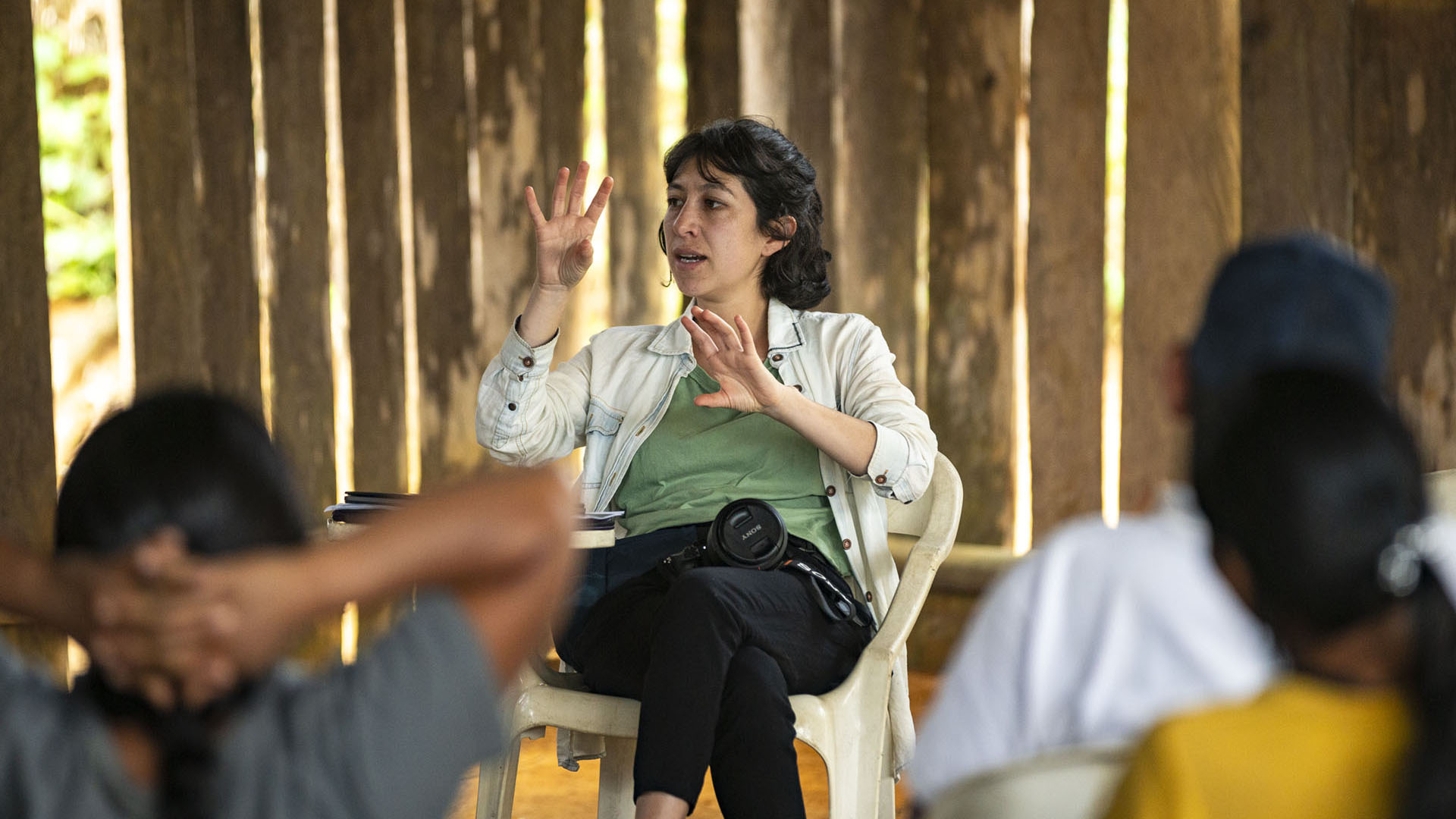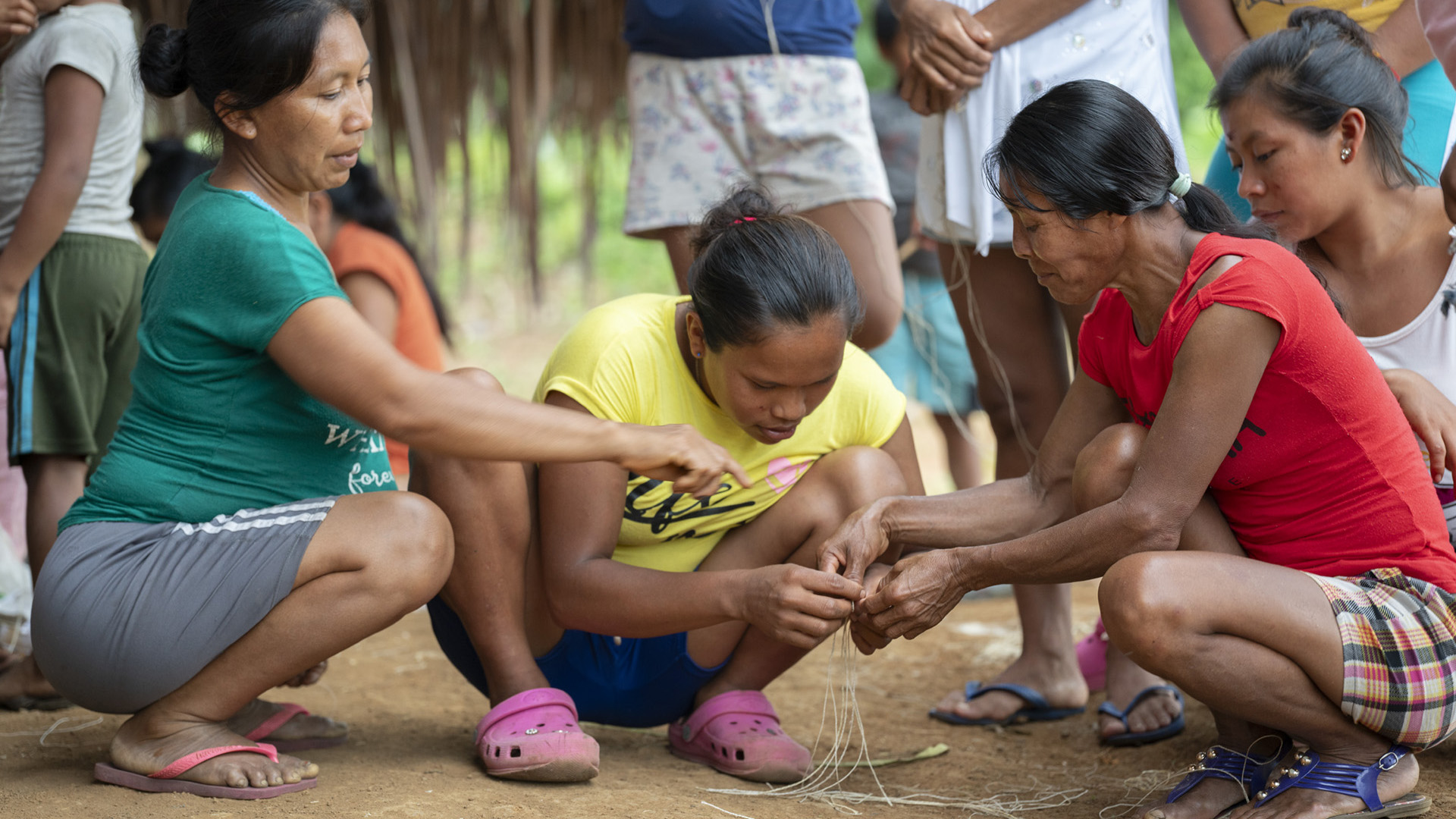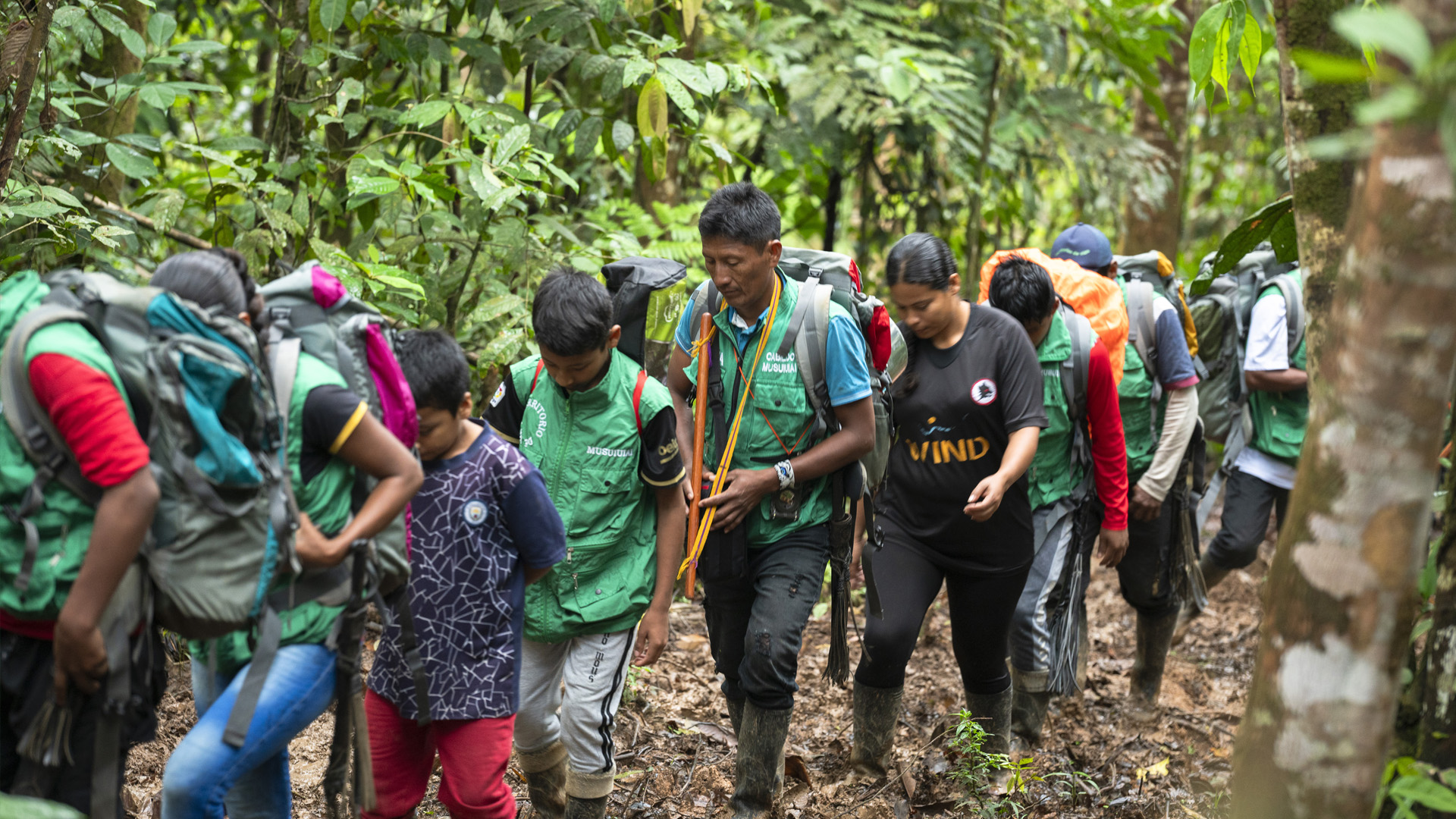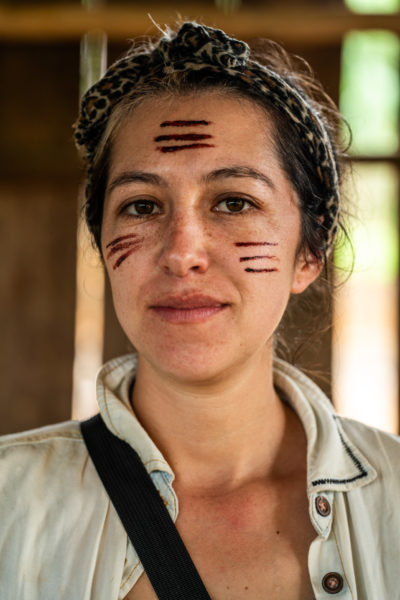Documentary series showcases the work of five Indigenous organizations protecting their territories of life and culture
especiales

The series “territories of life,” produced by the Centro de Estudios Médicos Interculturales (CEMI) with support from the U.S. Agency for International Development (USAID) presents the experiences of five Indigenous organizations in the Amazon region of Colombia and their efforts to care for and protect biological and cultural diversity. These groups are the Inga community of Musuiuiai, the El Itilla reserve, and the Asopamurimajsa, Asatrizy, and Aatiam Indigenous associations.
We spoke with Ana María Zuluaga, communications director at CEMI, to learn about the creative process behind the project. Links to the videos are included throughout this post.

CEMI Communications Director Ana María Zuluaga held workshops on community communications with the five organizations. Photo © CEMI/ Samuel Monsalve
How would you describe the creative process behind the “territories of life” series?
The series was produced as part of the “territories of life” project implemented by CEMI with support from USAID Colombia. Since we came up with the project in 2019, we proposed a communications strategy that included helping five beneficiary organizations train in community outreach and raising awareness about efforts to conserve and protect their territories of life.
The project’s first year coincided with the pandemic, so we worked virtually from Bogota to inform and train organizations about territories of life and ICCAs and help them declare these sites.

Elders preparing natural fibers to weave kneepads in Puerto Nariño, Vaupés. Photo © CEMI/ Ana María Zuluaga
In the second year, we had the opportunity to visit the five organizations to provide spaces for reflection around community communications and hold training workshops on photography, illustration, communication, and producing content for project dissemination.
The creative process was nourished by the lived experiences of each community and numerous conversations with project participants and traditional authorities.
How did you choose the five themes for the videos?
The themes emerged from conversations among territorial committees (groups composed of men, women, youth, elders), community members, traditional authorities, and wise elders. The communities worked on monitoring, gathering stories and norms, social mapping, and strengthening their processes, and each organization had interests that gradually took shape through video.
For example, the Inga community of Musuiuiai in Putumayo worked on a process of strengthening the Indigenous guard, which they call Alapamata Michadur or territorial defenders. They did excursions using GPS for several months and installed camera traps to observe animal species, including tigers, deer, turkeys, and spectacled bears.
The work was supported and guided by the Iacha Josefina Quinchoa, a traditional medicine practitioner from the community, who distributed remedies before and after the expeditions to protect and guide the guards. The expeditions awoke young people’s interest in the territory they take care of, traditional knowledge, and Indigenous identity.

Members of the Indigenous guard of Musuiuiai in Putumayo. Photo ©CEMI/ Ana María Zuluaga
The territorial committee of the El Itilla reserve was also enthusiastic about expeditions in the territory. They hoped to find the necessary elements to carry out ceremonies and fabricate traditional utensils and other materials. The reserve is in a remote location with dense jungles that have been little explored.
The expeditions were carried out under the guidance of wisdom keepers, who gathered near the entrance to the area to carry out what they call spiritual management of the territory, communicating with the spirits, identifying possible dangers, and asking permission to enter.
Did that experience shape the way you view territories of life?
The project helped me better understand the relationship between the Indigenous communities and their territory and the positive impact of this relationship on cultural conservation. I witnessed the importance of traditional knowledge and the key role of wisdom keepers (both men and women) in guaranteeing the health of the local culture and territory.
For example, in Asatrizy, we had the opportunity to support an inventory of all the flora and fauna necessary to fully carry out traditional ceremonies: plants to make body paint or fibers for weaving knee pads, feathers from numerous birds to weave the crowns worn by wisdom keepers and dancers. Biological diversity represents not just the health of the territory but also a guarantee of cultural wealth and strength, made possible thanks to the role of wisdom keepers and elders.
If culture is alive, the territories of life are alive, and the videos reflect that daily experience. One video highlights the importance of sound. How did you arrive at this theme?
Selva Sonora was created during an audio recording workshop that we held as the culmination of research by members of the Association of Traditional Indigenous Authorities of Mitú (AATIAM). The women were investigating the plants and the diversity of yucca that they have in traditional chagras (gardens), and the men were investigating the elements used in ceremonies and in the construction of malocas (longhouses).
During the workshop, we reflected on the relationship between sound and territory. The health and richness of the territory are reflected in the diversity of sounds found there, like rain, water, and birds. But the sounds of the forest also include bonfires, preparing yucca, and women at the river on the paths to the chagra. These sounds indicate to us that the territory is alive thanks to humans’ relationship with their surroundings.
Who is Ana María Zuluaga?

CEMI Communications Director Ana María Zuluaga. Photo ©CEMI/ Sebastián Bright
I was trained as a fine artist and photographer. I’ve been working with CEMI for many years, providing support in communication, design, and publications, including brochures and educational materials for projects in Indigenous and peasant communities in Colombia. Since 2016, I’ve been involved in disseminating the Territories of Life (TICCA) project in Colombia, helping with communications.
In 2019, I had the opportunity to participate as a workshop leader, which led to the creation of the Red TICCA Colombia (TICCA Network of Colombia), and we created the brand identity and communication strategy for that group.
Since 202, I’ve been the communications director at CEMI, supporting the organization’s communication strategy and helping to strengthen the Territories of Life in the Colombian Amazon.
We hope that you’ve enjoyed this conversation with Ana María Zuluaga. We invite you to watch, listen to, and enjoy the videos in the “territories of life” series.














Add new comment